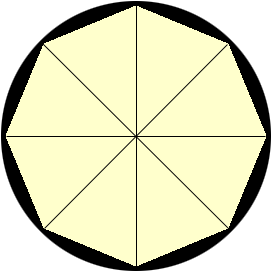Combinatorics-RMO 2015

Suppose there are 36 equally spaced points on the circumference of a circle.In how many ways you can choose 3 any two points such that no 2 of them are adjacent or diametrically opposite?
No vote yet
1 vote
Easy Math Editor
This discussion board is a place to discuss our Daily Challenges and the math and science related to those challenges. Explanations are more than just a solution — they should explain the steps and thinking strategies that you used to obtain the solution. Comments should further the discussion of math and science.
When posting on Brilliant:
*italics*or_italics_**bold**or__bold__paragraph 1
paragraph 2
[example link](https://brilliant.org)> This is a quote# I indented these lines # 4 spaces, and now they show # up as a code block. print "hello world"\(...\)or\[...\]to ensure proper formatting.2 \times 32^{34}a_{i-1}\frac{2}{3}\sqrt{2}\sum_{i=1}^3\sin \theta\boxed{123}Comments
We shall use PIE.
Step 1: Number of ways of selecting 3 points from 36 points is (336)=7140.
Step 2: Number of ways of selecting 3 adjacent points is 36.
Step 3: Number of ways of selecting 2 adjacent and one not adjacent with them is 36×32=1152. (Since there are 32 ways to select the non-adjacent point.)
Step 4: Number of ways of selecting two diametrically opposite points are 18 and number of ways of selecting third one not adjacent to both of them are 30 in each case. So total number of ways in this step are 18×30=540.
Step 5: Number of ways (what we required) = Total − Number of ways of selecting 3 adjacent points − Number of ways of selecting 2 adjacent and one not adjacent with them - Number of ways of selecting two diametrically opposite points and selecting third one not adjacent to both of them =7140−36−1152−540=5412.
I think there were 32 points instead of 36.
Log in to reply
I have given RMO of West Bengal Rgion and there was 36 points in the problem (problem no 4)....Perhaps in your region they have given 32....basically the procedure of solving the sum is not affected if the number of points in even.
5430
For 32 objects you can have a look at my solution here
What can be expected cutoff for rmo
Log in to reply
around 55
Log in to reply
bro 28
The answer is 5400.
Let the points be A,B and C. We can put A anywhere on the circle, giving 36 ways.
Then, B and C cannot be on the two points next to A, or the point opposite it, leaving 32C2 = 496 ways to choose B and C.
Of these, 30 configurations have B and C adjacent, and 16 have them opposite. We subtract these off to give 450 valid ways.
For each valid configuration, there is one way to generate it starting with A at each vertex. Thus each configuration has been counted 3 times, so we divide by 3 to get the final answer:
36x450/3 = 5400
What was your answer?
32*36